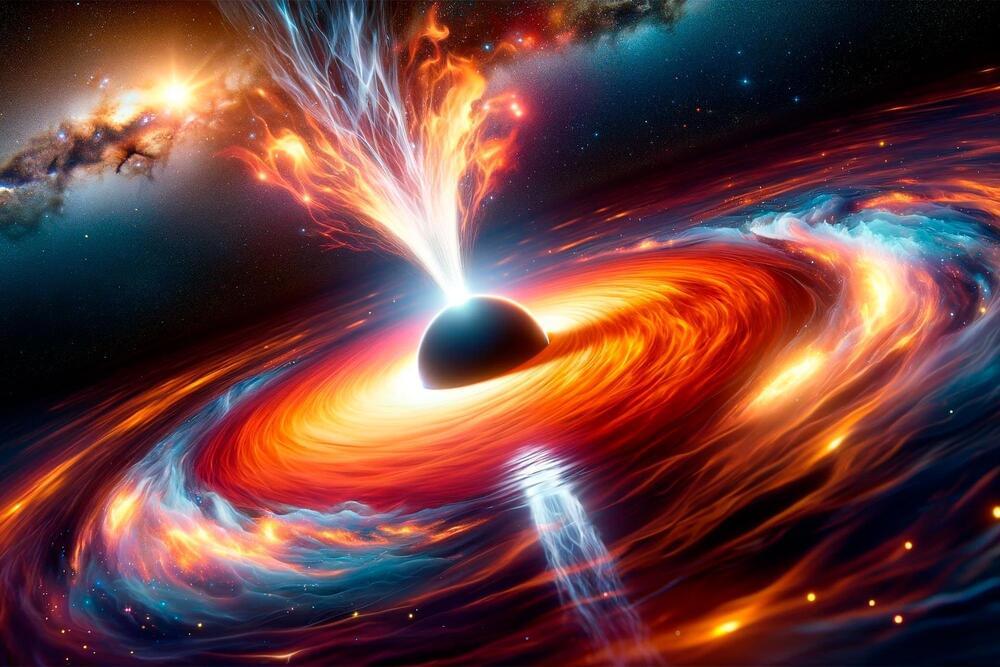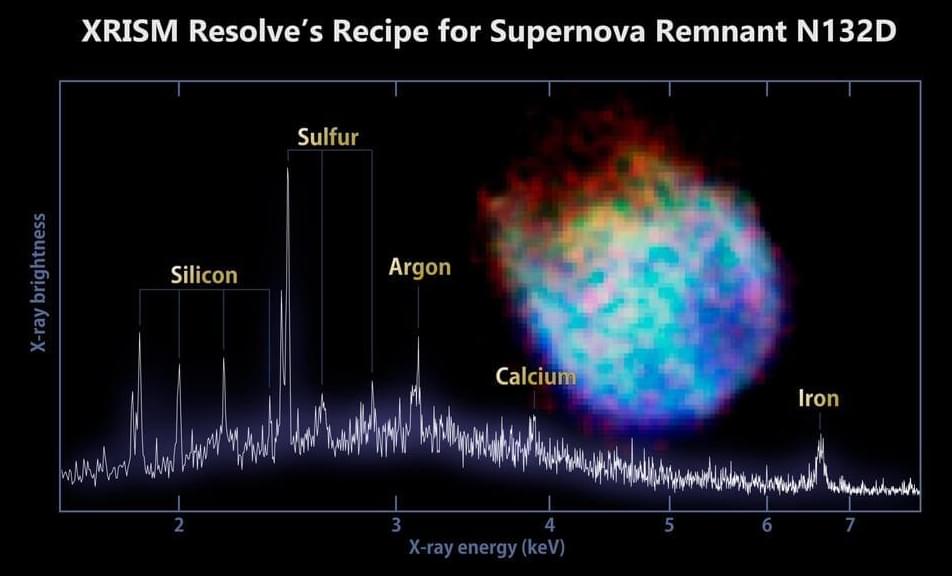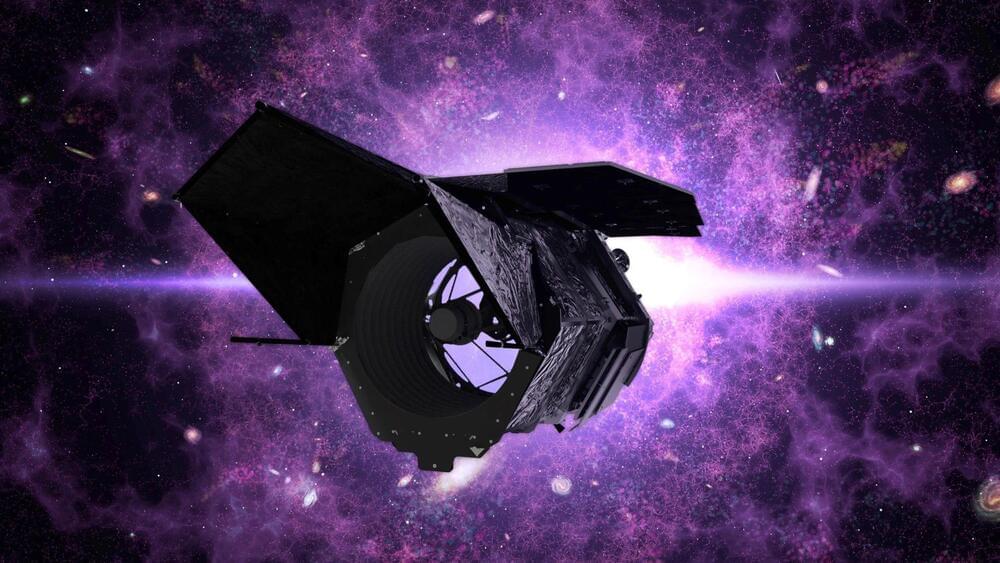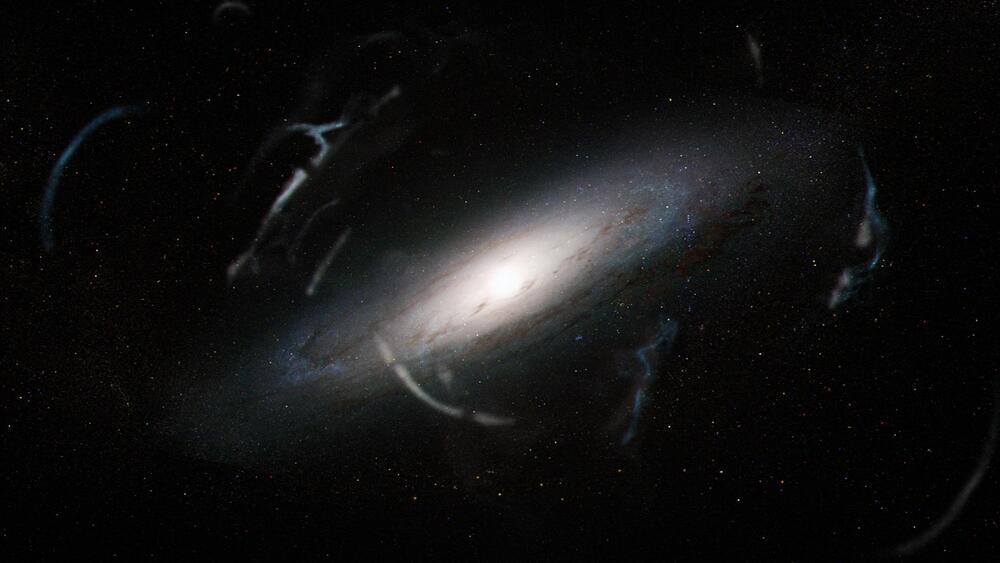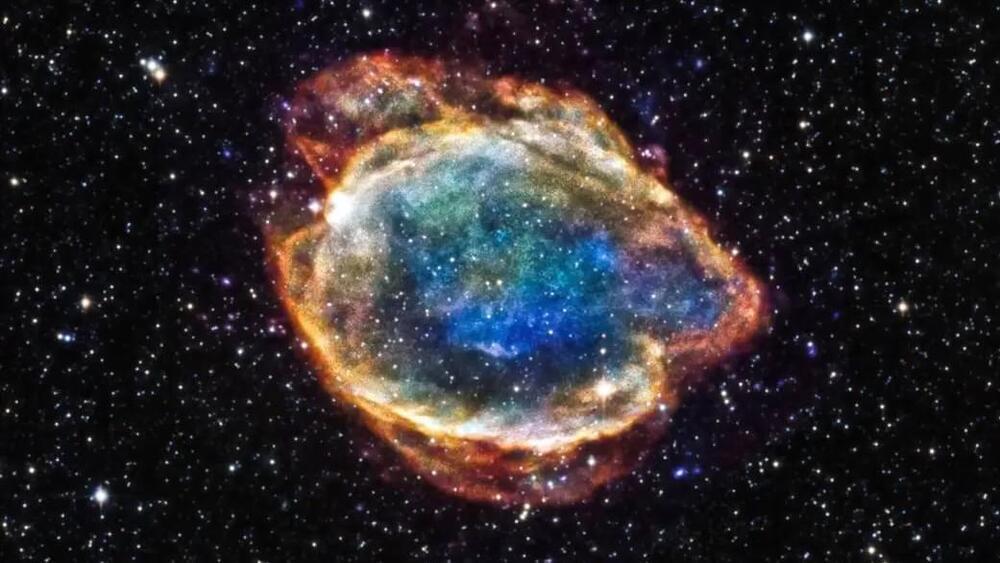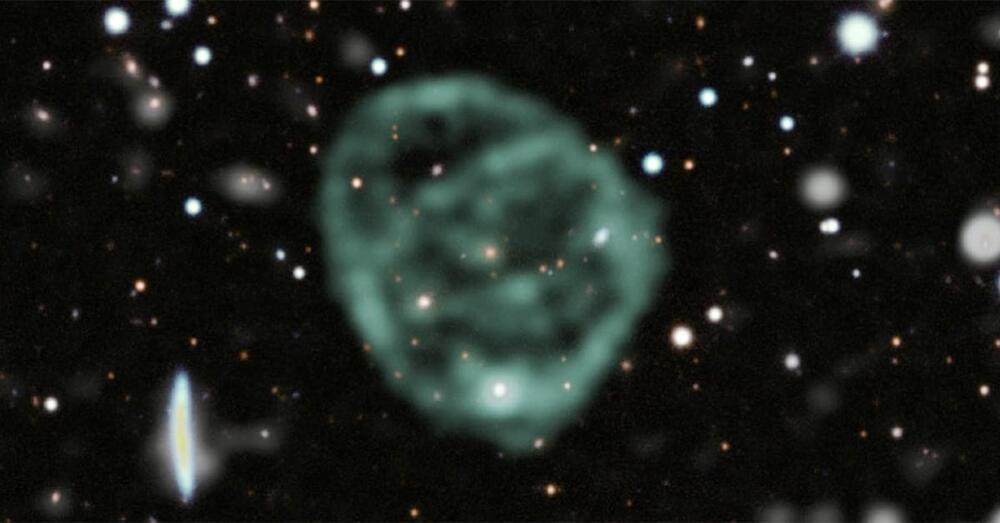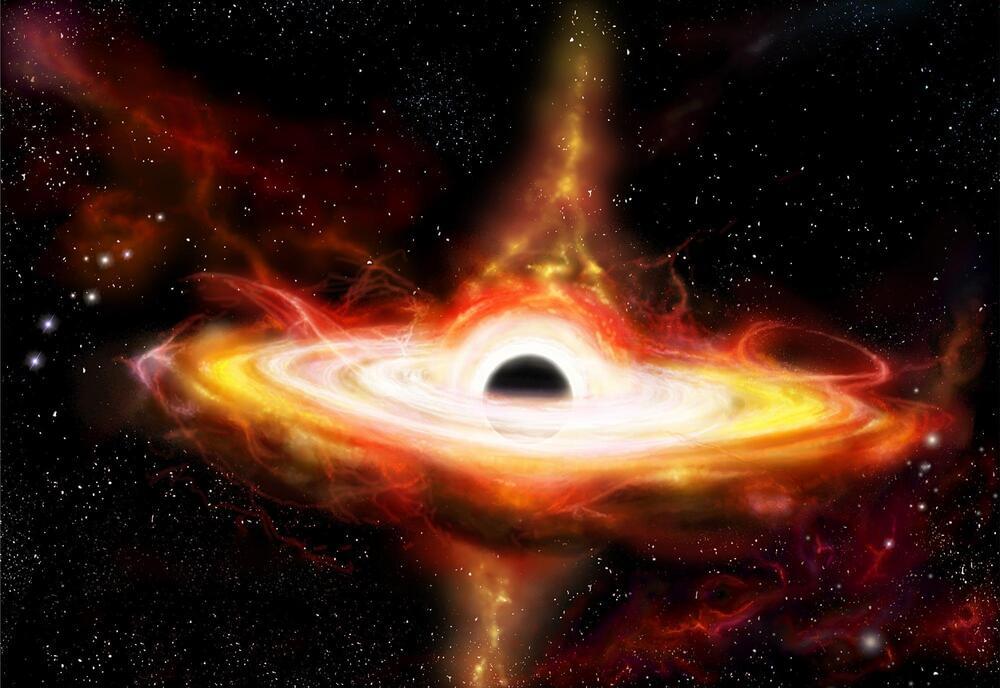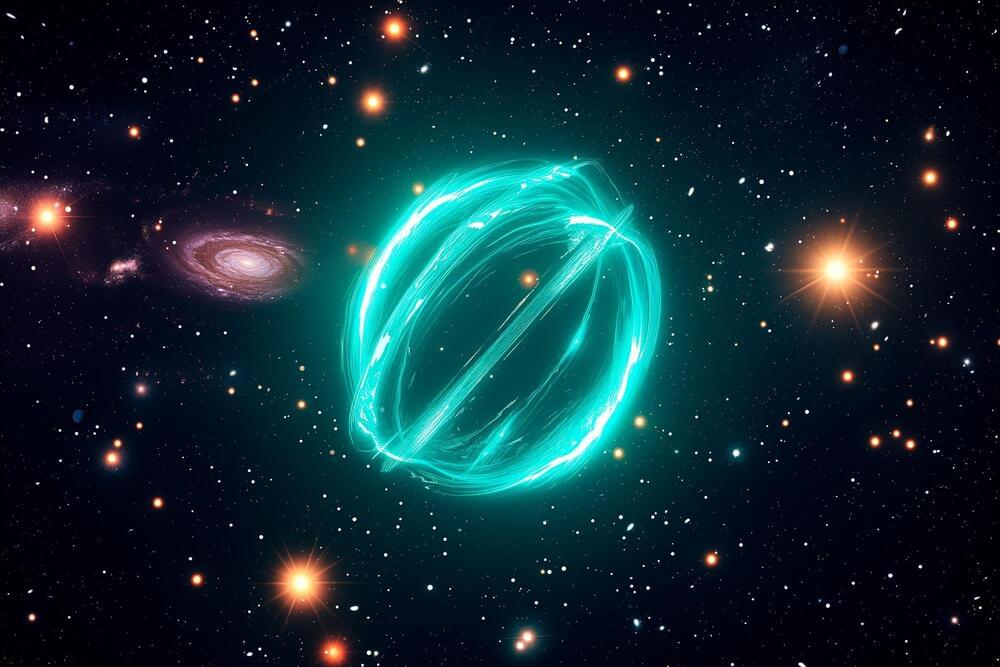Jan 18, 2024
Peering Into the Abyss: The Cutting-Edge Science of Black Hole Illumination
Posted by Saúl Morales Rodriguéz in categories: cosmology, science
New discoveries in Tidal Disruption Events enhance our understanding of supermassive black holes and their properties.
A new study by Hebrew University is a significant breakthrough in understanding Tidal Disruption Events (TDEs) involving supermassive black holes. The new simulations, for the first time ever, accurately replicate the entire sequence of a TDE from stellar disruption to the peak luminosity of the resulting flare. This study has unveiled a previously unknown type of shockwave within TDEs, settling a longstanding debate about the energy source of the brightest phases in these events. It confirms that shock dissipation powers the brightest weeks of a TDE flare, opening doors for future studies to utilize TDE observations as a means to measure essential properties of black holes and potentially test Einstein’s predictions in extreme gravitational environments.
The mysteries of supermassive black holes have long captivated astronomers, offering a glimpse into the deepest corners of our universe. Now, a new study led by Dr. Elad Steinberg and Dr. Nicholas C. Stone at the Racah Institute of Physics, The Hebrew University, sheds new light on these enigmatic cosmic entities.
